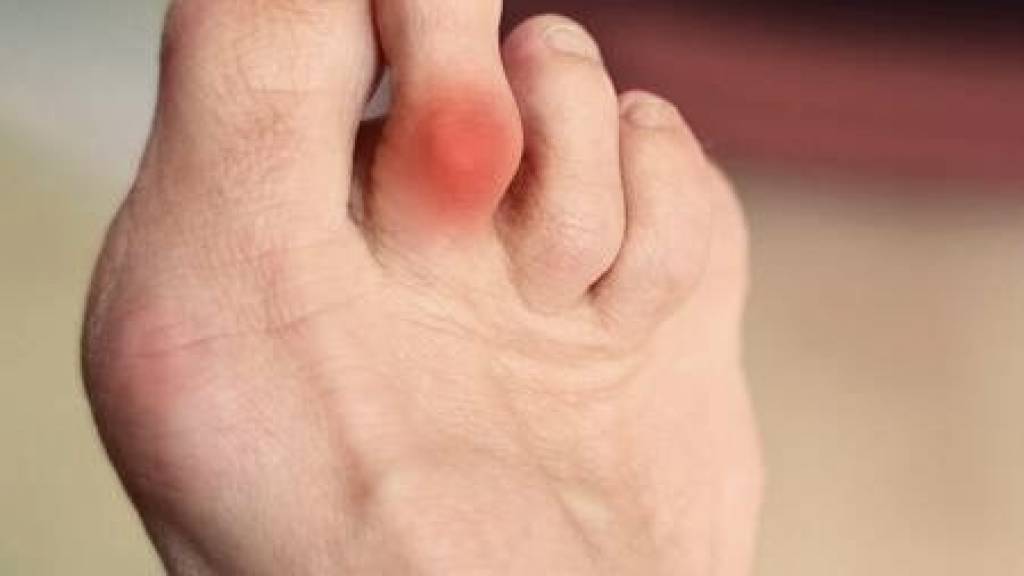Toe Deformities: Causes, Symptoms, and Treatments
Toe deformities are a group of orthopedic conditions that can significantly impact a person’s quality of life. These anatomical changes often cause pain and discomfort, can interfere with normal walking, and make it difficult to wear regular shoes. In this article, we’ll explore the different types of toe deformities, their causes and symptoms, and the most effective treatment options available today.
Types of Toe Deformities
The most common toe deformities fall into three main categories:
- Hammer toe: Typically affects the second, third, or fourth toe, involving the middle joint (proximal interphalangeal joint). The toe takes on a Z-shape appearance—raised at the base and bent downward at the middle.
- Mallet toe: This affects the last joint of the toe (distal interphalangeal joint), causing the tip of the toe to curve downward.
- Claw toe: Characterized by a flexion of both the metatarsophalangeal and interphalangeal joints. The toes appear claw-like—curled and lifted at the base.
These deformities can appear in isolation or in combination, and may affect one or several toes simultaneously.
Causes and Risk Factors
Toe deformities usually result from a combination of factors. Some of the most common causes and risks include:
- Degenerative conditions: Age-related wear and tear can lead to joint degeneration and deformity.
- Genetics: Inherited foot structures or conditions such as flat feet or bunions may increase the risk.
- Injuries: Acute trauma or repetitive microtrauma can contribute to long-term changes in toe alignment.
- Systemic diseases: Conditions like diabetes, rheumatoid arthritis, or neurological disorders can predispose individuals to toe deformities.
- Improper footwear: Shoes that are too tight, have high heels, or don’t support the natural shape of the foot can worsen or trigger deformities.
- Muscle-tendon imbalance: Disruption in the balance between toe flexors and extensors can lead to joint misalignment over time.
Symptoms and Clinical Signs
Symptoms can vary depending on the type and severity of the deformity. Common signs include:
- Localized pain: Especially noticeable while walking or wearing tight shoes, pain may be constant or activity-related.
- Walking difficulty: Altered toe alignment can interfere with normal gait and cause instability.
- Corns and calluses: Areas under increased pressure or friction, particularly on top of the affected joints or toe tips, can develop thickened skin.
- Swelling and stiffness: Affected joints may become swollen, red, and progressively stiff.
- Shoe-fitting problems: Severe deformities can make it difficult to wear standard footwear, often requiring special orthopedic shoes with extra room.
In advanced cases—particularly in patients with diabetes—pressure points may lead to skin ulcers, requiring immediate attention to prevent complications such as diabetic foot lesions.
Diagnosis and Assessment
Toe deformities are usually diagnosed through a thorough physical examination. A foot specialist will assess:
- Toe position and alignment
- Presence of calluses or skin ulcers
- Flexibility or stiffness in the affected joints
- Pain during palpation or movement
If needed, imaging studies such as X-rays may be used to better understand the joint structure. These can reveal:
- Degree of joint misalignment
- Signs of arthritis or bone damage
- Associated conditions like bunions
In complex cases or when planning surgery, additional imaging like MRI or ultrasound may be recommended.
Treatment Options
Treatment depends on the severity of the condition, its impact on daily life, and any coexisting health issues. There are both conservative and surgical approaches.
Conservative treatment:
This is usually the first line of care and may include:
- Shoe modifications: Wide-toe shoes with flexible soles help reduce pressure on the affected toes.
- Toe orthoses: Silicone or soft material pads and spacers protect pressure areas and help align the toes.
- Custom insoles: Designed to redistribute weight evenly and improve walking mechanics.
- Callus care: Regular removal of thickened skin can ease discomfort and prevent further issues.
Medication:
Anti-inflammatory drugs (NSAIDs) can be taken orally or applied topically to manage pain and swelling. In some cases, corticosteroid injections may provide short-term relief.
Surgical treatment:
If conservative therapy fails or the deformity is rigid and painful, surgery may be necessary. Options include:
- Tendon release or lengthening to restore balance between muscles
- Osteotomies (bone realignment procedures)
- Joint fusion (arthrodesis) in severe cases or when arthritis is present
The choice of surgical method depends on factors like the patient’s age, activity level, medical history, and post-operative expectations.
Prevention and Long-Term Care
Preventing toe deformities and managing them over time requires a comprehensive approach:
- Proper footwear: Shoes should follow the natural shape of the foot, leaving enough room for the toes and offering arch support. Consulting with an orthopedic technician can help you find the most suitable option.
- Maintaining a healthy weight: Reduces stress on foot structures and slows down joint degeneration.
- Stretching and strengthening exercises: Regular exercises help maintain toe flexibility and strengthen the intrinsic muscles of the foot.
- Regular checkups: Especially important for those with risk factors like diabetes or arthritis—early detection is key.
- Managing underlying conditions: Keeping systemic diseases under control can help prevent foot complications.
Conclusion
Toe deformities are orthopedic conditions that, if left untreated, can significantly affect a person’s daily life. Early diagnosis and a personalized treatment plan are essential to slowing the progression and reducing complications. Whether through conservative or surgical means, the primary goal is to relieve pain, improve foot function, and help patients maintain an active, fulfilling lifestyle.
Consulting with a specialist is the first step in understanding your condition and finding the best course of action.
For more information, don’t hesitate to contact us. Our team is available at our clinic in Via Taramelli 21/23, Bergamo.
You can reach us by phone at +39 035 212110 from Monday to Saturday, 9:00–12:30 and 15:00–19:00, or by email at info@ortopediazambelli.it.
All the news

